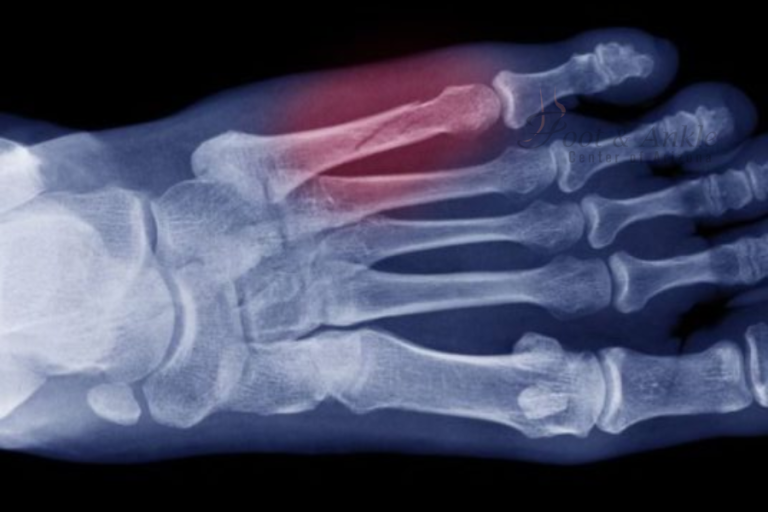One of the most common and painful conditions is the ingrown toenail when the edges or corners of a toenail grow into the surrounding skin. In the end, this grows into troublesome discomfort, swelling, or even infection. Probably the most distressing symptom of an infected ingrown toenail is pus, which is an indication that the body is fighting back the infection. No matter whether you need to drain pus from an ingrown toenail, get rid of a toe infection, or soak an infected toe to ensure healing, this article will serve as a step-by-step guide in managing and treating an ingrown toenail.
How much do you know about ingrown toenails?
Medically referred to as onychocryptosis, an ingrown toenail occurs on your big toe but can affect any other toe. The causes range from:
- Poor trimming
- Tight shoes
- Toe injuries
- Genetic factors
When the toenail grows into the skin, it can cause pain, redness, and swelling. If left untreated, an ingrown toenail can get infected, leading to the formation of pus and increased discomfort.
Symptoms of Infection
Equally important in treating an infected ingrown toenail is being able, first, to recognize the infection. The symptoms that denote an infected ingrown toenail include:
- pains and tenderness
- redness and swelling at the nail
- pus under the toenail
- foul smell from the toe
- Warmth in the affected area
How to Drain Pus from an Ingrown Toenail
The one thing you should never delay with an infected ingrown toenail is draining the puss. The process of draining puss from an infected ingrown toenail, however, needs to be taken with lots of care and caution. It may lead to more complications if it is not carried out aptly. The steps for draining the puss safely from the ingrown toenail are:
- Gather Supplies: You will need warm water, Epsom salt, antibacterial soap, a clean towel, sterile gauze, and a needle or sterile lancet.
- Soak Your Toe: Soak the toe in warm water with Epsom salt for 15-20 minutes. This can help soften the skin and bring down swelling a little.
- Clean the Area: Wash the toe with antibacterial soap and pat dry it with a clean towel.
- Sterilize the Needle: Sterilize the needle or lancet with some rubbing alcohol. This step is pretty important to avoid putting more bacteria into the wound.
- Drain the Pus: Using a sterile needle, carefully prick the swollen area. Gently apply pressure until the pus comes out. Be gentle so that you do not further damage your skin.
- Clean the Wound: Clean up once again with antibacterial soap and wash thoroughly.
- Apply Antibiotic Ointment: Apply some thin layer of antibiotic ointment over the wound to prevent further infection.
Cover it with sterile gauze and secure it with medical tape. Change the bandage daily and keep the toe clean and dry.
How to Get Rid of a Toe Infection
Treating a toe infection involves various steps that must be taken toward proper healing and the prevention of further infection. Following are some of the most efficient methods for ridding yourself of a toe infection:
- Maintain Good Hygiene: Keep the infected toe clean and dry; wash it daily using antibacterial soap and warm water.
- Apply Antibiotics: Over-the-counter antibiotic ointments combat the infection. In severe cases, further oral antibiotics from a professional usually become necessary.
- Soak the Toe: Soak the affected toe in warm water mixed with Epsom salt regularly. It reduces swelling, allows relief from the pain, and drains off the pus.
- Wear Proper Footwear: Shoes that fit too tightly could exert pressure of increased magnitude, worsening the case, so open-toed shoes or sandals are good gear to help reduce the pressure on the affected toe.
- Keep your Nails Properly Trimmed: Trim your toenails straight across and try not to round the edges. This avoids the likelihood of ingrowth of the nails into the skin.
- Professional Help: If the next step with the home remedies is just not working, or if there is a presence of a disease that may affect healing, like diabetes, then you may want to consult a podiatrist.
How to Soak an Infected Toe
Soaking the infected toe is very easy and quite effective for reducing symptoms and enhancing healing. The steps for soaking an infected toe are as follows:
- Making of the Soaking Solution: Fill a basin with warm water and add a handful of Epsom salt. Take time to mix or stir until the salt is dissolved in the water.
- Soak the Toe: Hold the affected toe inside the solution for 15-20 minutes. Ensure the water is not too hot to prevent burns.
- Dry the Toe: Following soaking, dry the toe gently by dabbing with a clean towel. Avoid rubbing, which may further irritate the skin.
- Repeat Regularly: Soak the toe two times a day to three times, especially in case of a bad infection. Frequent soaking of the toe helps the pus to come out, brings down swelling, and reduces pain.
Beware of Ingrown Toenails and Infections
Good foot care and attention are the states that will prevent ingrown toenails and infections. Here are tips to maintain healthy toes:
- Trim your nails properly: Always cut your toenails straight across and avoid trimming them too short.
- Wear appropriate footwear: Always wear shoes that fit and allow ample room for your toes. Avoid shoes that are too tight or narrow and press against your nails.
- Keep your toes safe: Be careful not to hurt your toes. If you will be doing something that might hurt your toes such as RAFTING wear shoes or other footwear that will protect them.
- Keep your feet clean: Wash your feet every day and dry them completely, especially between the toes.
- Check your feet every day: Look carefully at your feet to see if you have an ingrown toenail infection or other problems. The sooner you find a problem, the sooner you can get treatment.
Seek help if needed
Although mild infections may be amenable to home treatment, there are instances in which professional care must be sought out. Know when…
- The infection does not show some improvement after being treated at home for some days.
- The pain, redness, or swelling is harsh.
- The pus continues to collect even after being drained.
- You have various health conditions, such as diabetes or poor circulation.
- The infection begins to spread into other parts of your foot.
Conclusion
They may really hurt and lead to a lot of discomfort, especially when infected. Treatment and proper care are thus essential to avoid other complications and aid in the healing process. The steps given here include treatment measures and management of an ingrown toenail and the procedures for draining the pus and ridding oneself of toe infections. This incorporates observing proper hygiene of the feet, wearing appropriate shoes, and seeking professional advice as required. These precautions will help your feet remain healthy and out of pain.




